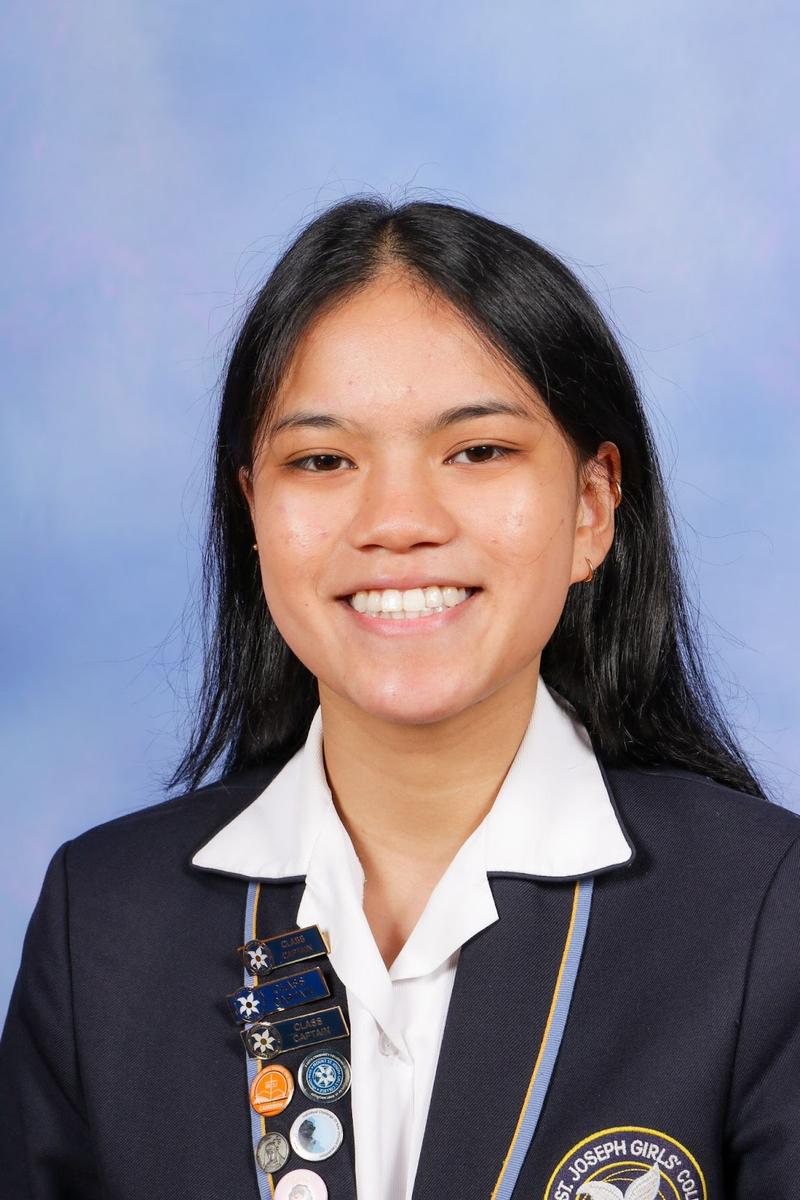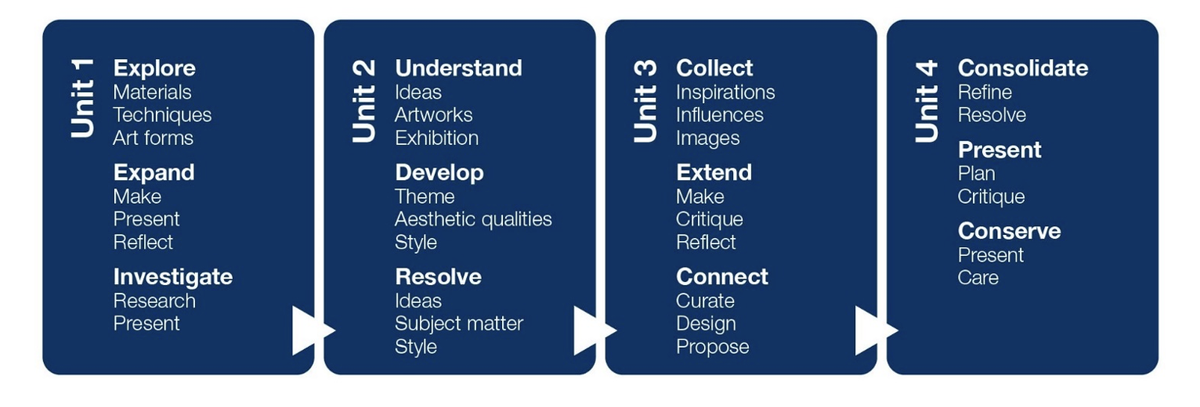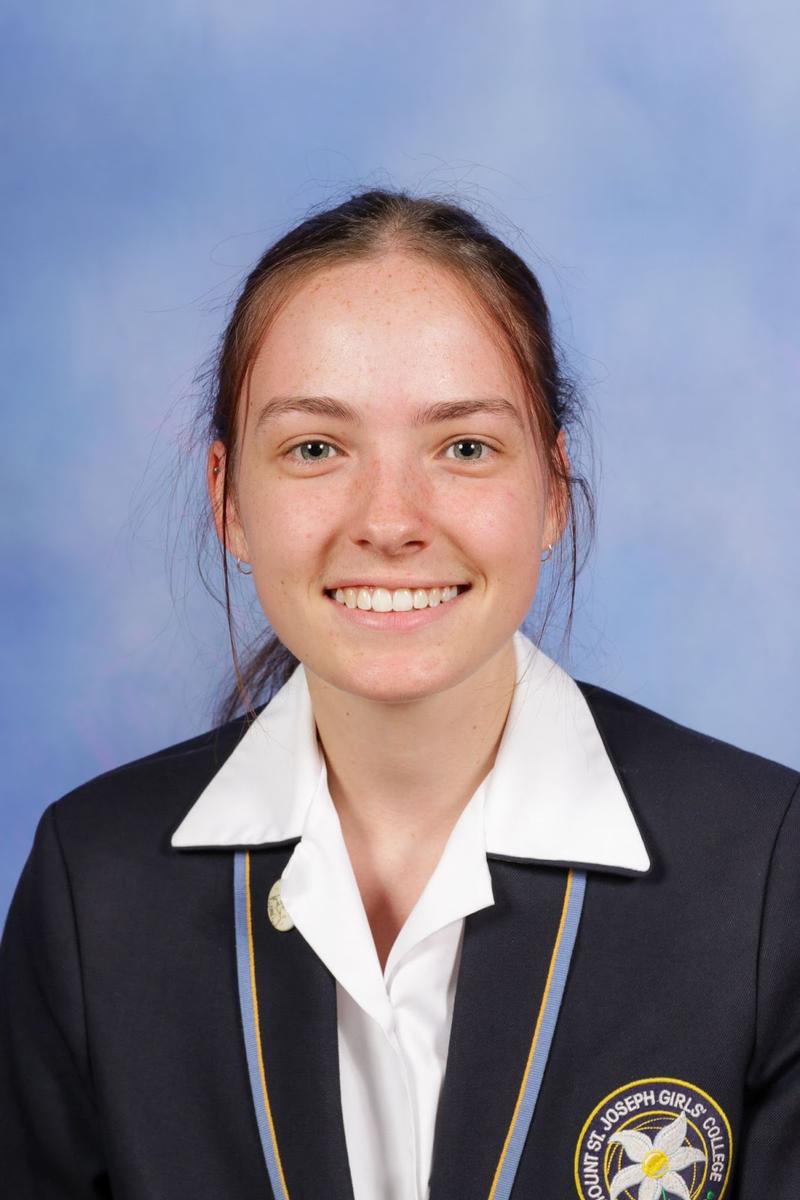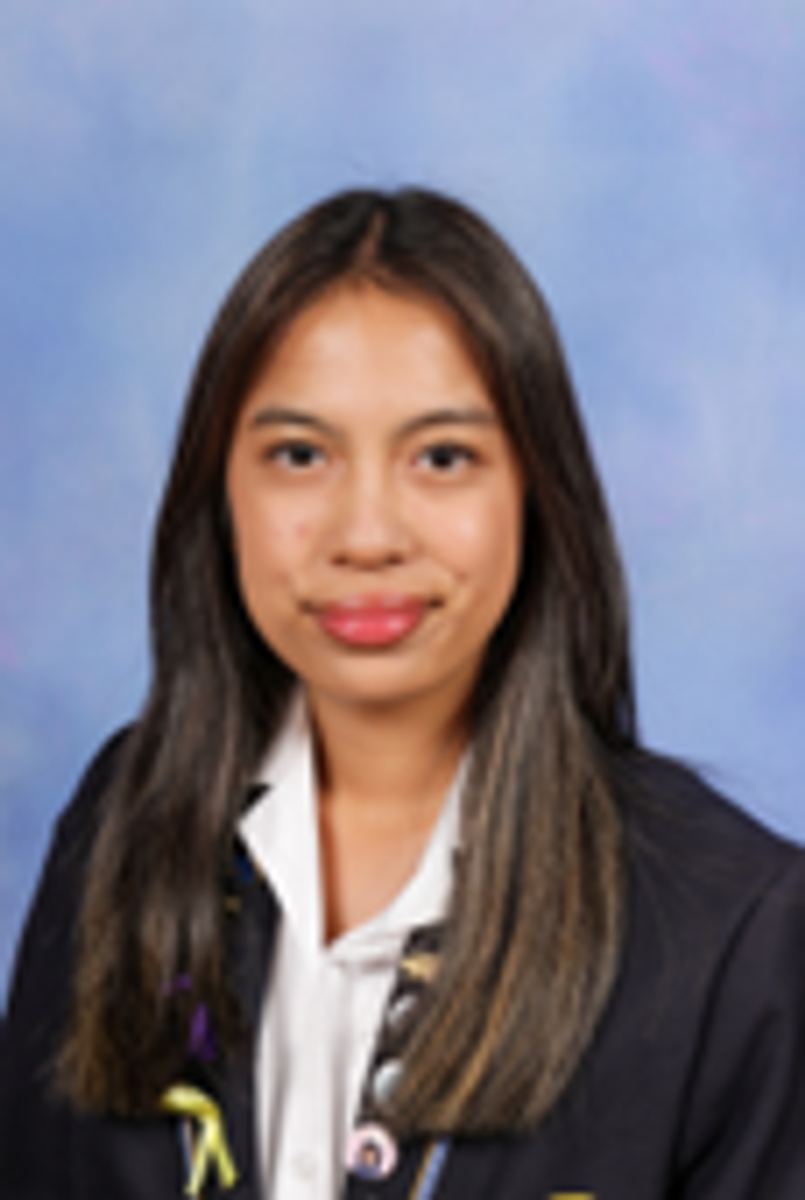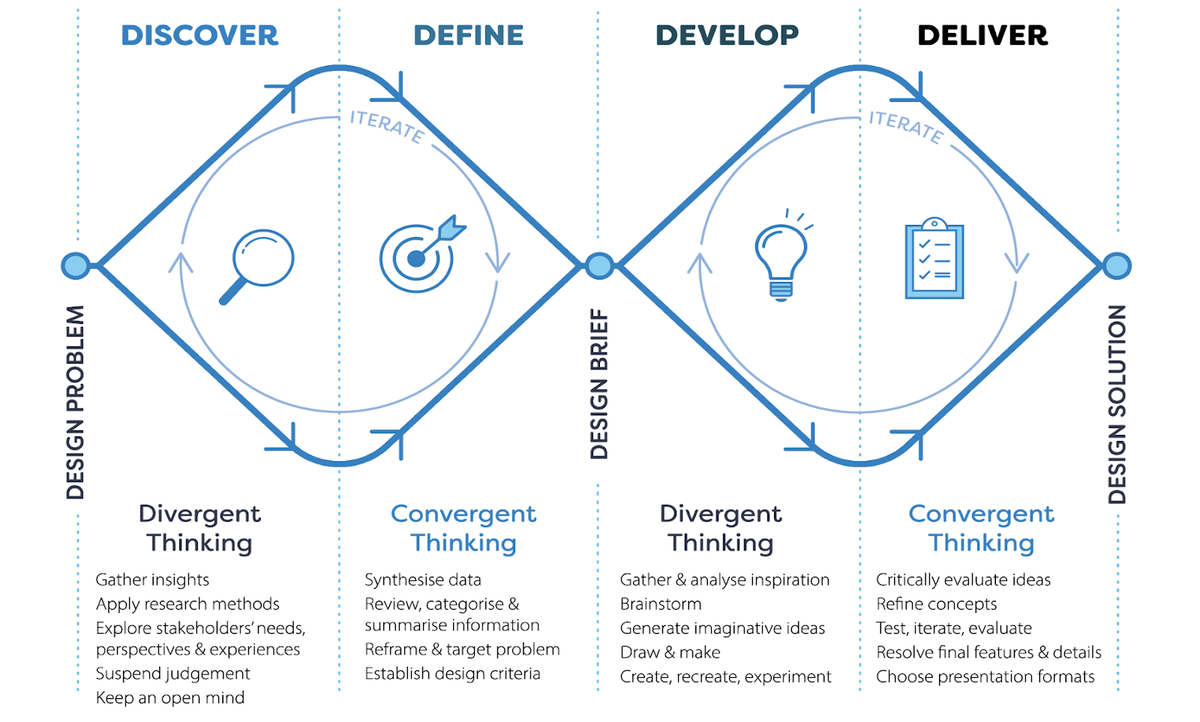Visual Arts
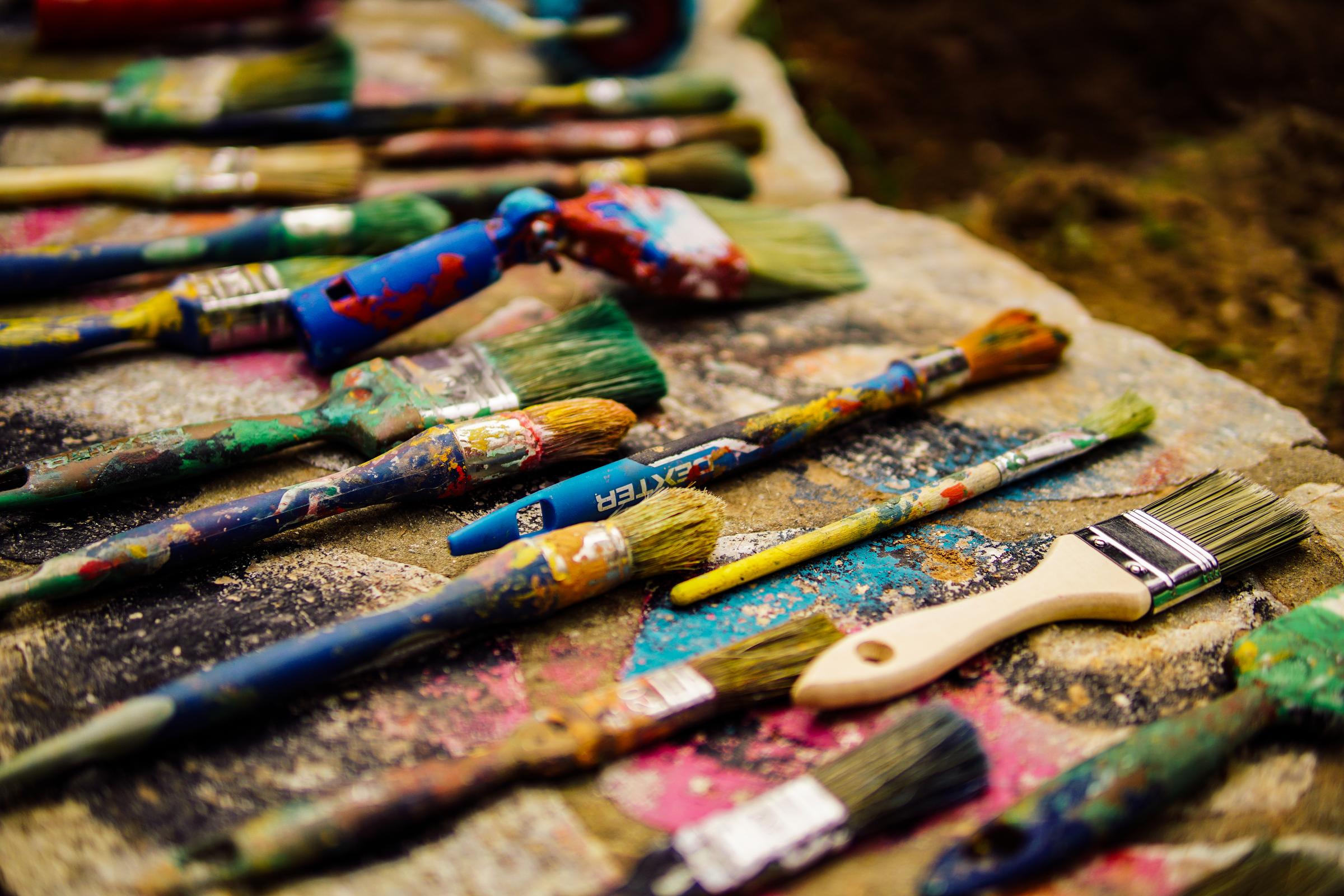
- Art Making and Exhibiting
- Media
- Visual Communication Design
When selecting a Visual Arts Unit as a VCE subject you need to consider the following points:
- Well-established habits of regular study and practical portfolio tasks for the subject provide the basis for selection of Visual Art at VCE.
- You should have a strong desire to further your knowledge in this area of study.
- Visual Art Units 3 & 4 may have extra costs depending on the nature of the practical work the individual student completes.
- This subject is folio-based. The College recommends students partake in no more than 2 folio subjects in VCE.
- Students wanting to undertake units 3 and 4 must complete unit 1 and 2 in the corresponding subject.
- VIsual Arts units may require the personal acquisition of software and hardware, depending on the nature of the practical work and the field of specialism a student selects.
Student's who are considering doing more than one Folio based subject such as Media, Visual Communication Design, Studio Arts, VET Certificate III in Interactive Digital Media and Product Design and Technology (Textiles) must consider the workload that a folio subject entails. Often students who complete more than one folio subject intend entering a Tertiary Course that requires an interview and folio presentation. Students who wish to choose two or more folio-based subjects are advised to seek advice prior to making their subject selection.
Art Making and Exhibiting
Subject Entry Information | Complementary Subjects | Types of Assessment |
|---|---|---|
|
|
|
Sunita Daravong - I chose this subject with the purpose to get away from my content-based subjects, I learnt that art in Year 11 allowed me to explore the free-flowing and artistic sides of myself. The freedom and creativity I produce out of my own crafts bring joy and pride. I enjoy this subject because I get to explore what I am most passionate about and enable myself to improve areas of strengths and weaknesses. I have noticed that art takes a lot of energy and time away from other things in my life, there are times where I find myself so indulged that I make it my priority. However, the process of creation will always involve hardships, once you get over them the result becomes so precious to you and you take so much pride in the effort you put. Art as a subject does not limit you to the talent you have, it is about the dedication and work you put into it. Do not be discouraged to take this subject if you think your abilities, ‘are not good enough’ because it is not entirely related to that, it is about the your ability to work through the process.
VCE Art Making and Exhibiting introduces students to the methods used to make artworks and how artworks are presented and exhibited.
Students use inquiry learning to explore, develop and refine the use of materials, techniques and processes and to develop their knowledge and understanding of the ways artworks are made. They learn how art elements and art principles are used to create aesthetic qualities in artworks and how ideas are communicated through the use of visual language. Their knowledge and skills evolve through the experience of making and presenting their own artworks and through the viewing and analysis of artworks by other artists.
Unit 1: Explore, expand and investigate
In this unit students explore materials, techniques and processes in a range of art forms. They expand their knowledge and understanding of the characteristics, properties and application of materials used in art making. They explore selected materials to understand how they relate to specific art forms and how they can be used in the making of artworks. Students also explore the historical development of specific art forms and investigate how the characteristics, properties and use of materials and techniques have changed over time. Throughout their investigation students become aware of and understand the safe handling of materials they use.
Unit 2: Understand, develop and resolve
In Unit 2 students continue to research how artworks are made by investigating how artists use aesthetic qualities to represent ideas in artworks. They broaden their investigation to understand how artworks are displayed to audiences, and how ideas are represented to communicate meaning.
Students respond to a set theme and progressively develop their own ideas. Students learn how to develop their ideas using materials, techniques and processes, and art elements and art principles. They consolidate these ideas to plan and make finished artworks, reflecting on their knowledge and understanding of the aesthetic qualities of artworks. The planning and development of at least one finished artwork are documented in their Visual Arts journal.
Unit 3: Collect, extend and connect
In this unit students are actively engaged in art making using materials, techniques and processes. They explore contexts, subject matter and ideas to develop artworks in imaginative and creative ways. They also investigate how artists use visual language to represent ideas and meaning in artworks. The materials, techniques and processes of the art form the students work with are fundamental to the artworks they make.
Unit 4: Consolidate, present and conserve
In Unit 4 students make connections to the artworks they have made in Unit 3, consolidating and extending their ideas and art making to further refine and resolve artworks in -specific art forms. The progressive resolution of these artworks is documented in the student’s Visual Arts journal, demonstrating their developing technical skills in a specific art form as well as their refinement and resolution of subject matter, ideas, visual language, aesthetic qualities and style. Students also reflect on their selected finished artworks and evaluate the materials, techniques and processes used to make them.
Assessment
Percentage contributions to the study score in VCE Studio Arts for Units 3 and 4 are as follows:
- Unit 3 School-assessed Coursework: 5%
- Unit 4 School-assessed Coursework: 5%
- Unit 3 and 4 School-assessed Task: 60%
- End-of-year examination: 30%
Media
Subject Entry Information | Complementary Subjects | Types of Assessment |
|---|---|---|
|
|
|
Emma Giacchi- I personally chose VCE media because I love to watch movies and I find it very interesting to analyse them. I also thought it would be really fun to get to make my own. My favourite thing about this subject is that you get to work on a media product which you can feel proud of. I love the freedom of the project, because everyone in the class has been able to choose something which they love and are passionate about. I also find media theory very interesting, as you get to learn all about films and why they are created, and how they add meaning to it. One aspect that I find challenging about VCE media is the amount of time and effort that goes into making your own final project. One thing to consider is that media requires a lot of time and effort when it comes to the creation of your final product.I would 100% recommend this subject to anyone in year 10 who likes the sound of VCE media.
The media is ubiquitous. Media is deeply embedded within life and culture at a local, national and global level. It entertains, teaches, informs and shapes audiences’ perception of their lives and the world in which they live.
Unit 1: Media forms, representations and Australian stories
The relationship between audiences and the media is evolving. Audiences engage with media products in many ways. They share a common language with media producers and construct meanings from the representations within a media product.
In this unit, students develop an understanding of audiences and the core concepts underpinning the construction of representations and meaning in different media forms. They explore media codes and conventions and the construction of meaning in media products.
Unit 2: Narrative across media forms
Fictional and non-fictional narratives are fundamental to the media and are found in all media forms. Media industries such as journalism and filmmaking are built upon the creation and distribution of narratives constructed in the form of a series of interconnected images and/or sounds and/or words, using media codes and conventions. New media forms and technologies enable participants to design, create and distribute narratives in hybrid forms such as collaborative and user-generated content, which challenges the traditional understanding of narrative form and content. Narratives in new media forms have generated new modes of audience engagement, consumption and reception.
Unit 3: Media narratives, contexts and pre-production
In this unit, students explore stories that circulate in society through a close analysis of a media narrative.
Narratives are defined as the depiction of a chain of events in a cause-and-effect relationship occurring in physical and/or virtual space and time in fictional and non-fictional media products. Students consider the use of codes and narrative conventions to structure meaning and explore the role these play in media narratives. Through the close analysis of a media narrative, students develop media language and terminology and a deeper understanding of how codes and narrative conventions are combined in a narrative. They study how social, historical, institutional, culture, economic and political contexts may influence the construction of media narratives and audience readings.
Unit 4: Media production
In this unit students focus on the production and post-production stages of the media production process, bringing the pre-production plans created in Unit 3 to their realisation. Students refine their media production in response to feedback and through personal reflection, documenting the iterations of their production as they work towards completion.
The context in which media products are produced, distributed and consumed is an essential framework through which audiences view and read media products. Social, historical, institutional, cultural, economic and political contexts can be seen through explicit or implied views and values conveyed within media products. The media disseminate these views and values within a society and, as a result, can play a key role in influencing, reinforcing or challenging the cultural norms.
Selection Advice
Media has a major component of Production Design Plan based assessment.
Assessment
Percentage contributions to the study score in VCE Media for Units 3 and 4 are as follows:
- Unit 3 School-assessed Coursework: 10%
- Unit 4 School-assessed Coursework: 10%
- School-assessed Task: 40%
Visual Communication Design
Subject Entry Information | Complementary Subjects | Types of Assessment |
|
|
|
Angelica Victorio - I had always considered studying Architecture and Civil Engineering in the future in University and one of the fields covered in VCD is Environmental Design. Being able to take an idea and create it into a final design, can emote really positive feelings. Doing a folio subject in VCE for me personally gives me a break from doing core subjects. VCD has so much room for creativity and there are various techniques and practices which individuals can choose to do. Particular tasks can be considered quite challenging at the start such as technical drawings. Being able to meet deadlines within the subject can be difficult if you’re unable to manage one's time to complete particular tasks/drawings. As Visual Communications is a folio subject which follows particular processes and steps, it can be quite time consuming so it is important to be aware of balancing the workload. You should choose VCD if you are passionate in design/arts and are dedicated to the work and have a strong passion and love for all the design fields. Visual Communication and Design is for students who enjoy drawing and designing. This is for students who are open to learning challenging new skills.
The VCD design process
Visual Communication Design is distinct in its study of visual language and the role it plays in communicating ideas, solving problems and influencing behaviours. Students learn how to manipulate type and imagery when designing for specific contexts, purposes and audiences. They choose and combine manual and digital methods, media and materials with design elements and principles. In doing so, students learn how aesthetic considerations contribute to the effective communication and resolution of design ideas, and how an understanding of visual language, its role and potential is the foundation of effective design practice.
Unit 1: Finding, reframing and resolving design problems
In this unit students are introduced to the practices and processes used by designers to identify, reframe and resolve human-centred design problems. They learn how design can improve life and living for people, communities and societies, and how understandings of good design have changed over time. Students learn the value of human-centred research methods, working collaboratively to discover design problems and understand the perspectives of stakeholders. They draw on these new insights to determine communication needs and prepare design criteria in the form of a brief.
Unit 2: Design contexts and connections
Unit 2 builds on understandings of visual communication practices developed in Unit 1. Students draw on conceptions of good design, human-centred research methods and influential design factors as they revisit the VCD design process, applying the model in its entirety. Practical tasks across the unit focus on the design of environments and interactive experiences. Students adopt the practices of design specialists working in fields such as architecture, landscape architecture and interior design, while discovering the role of the interactive designer in the realm of user-experience (UX). Methods, media and materials are explored together with the design elements and principles, as students develop spaces and interfaces that respond to both contextual factors and user needs.
Unit 3: Visual communication design practices
In this unit students gain an understanding of the process designers employ to structure their thinking and communicate ideas with clients, target audiences, other designers and specialists. Through practical investigation and analysis of existing visual communications, students gain insight into how the selection of methods, media and materials, and the application of design elements and design principles, can create effective visual communications for specific audiences and purposes. They investigate and experiment with the use of manual and digital methods, media and materials to make informed decisions when selecting suitable approaches for the development of their own design ideas and concepts.
Unit 4: Delivering design solutions
In this unit students continue to explore the VCD design process, resolving design concepts and presenting solutions for two distinct communication needs. Ideas developed in Unit 3, Outcome 3 are evaluated, selected, refined and shared with others for further review. An iterative cycle is undertaken as students rework ideas, revisit research and review design criteria defined in the brief. Manual and digital methods, media and materials are explored together with design elements and principles, and concepts tested using models, mock-ups or low-fidelity prototypes.
Selection Advice.
Visual Communication and Design is a folio based VCE subject.
Assessment
Percentage contributions to the study score in VCE Visual Communication Design for Units 3 and 4 are as follows:
- Unit 3 School-assessed Coursework: 20%
- Unit 3 & 4 School-assessed Task: 50%
- End-of-year examination: 30%
